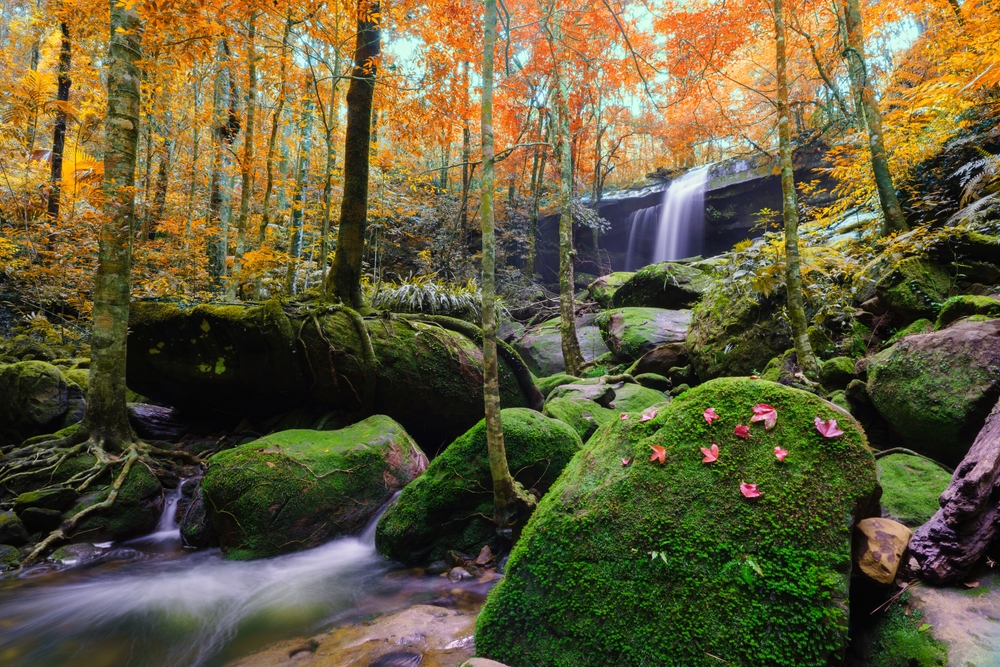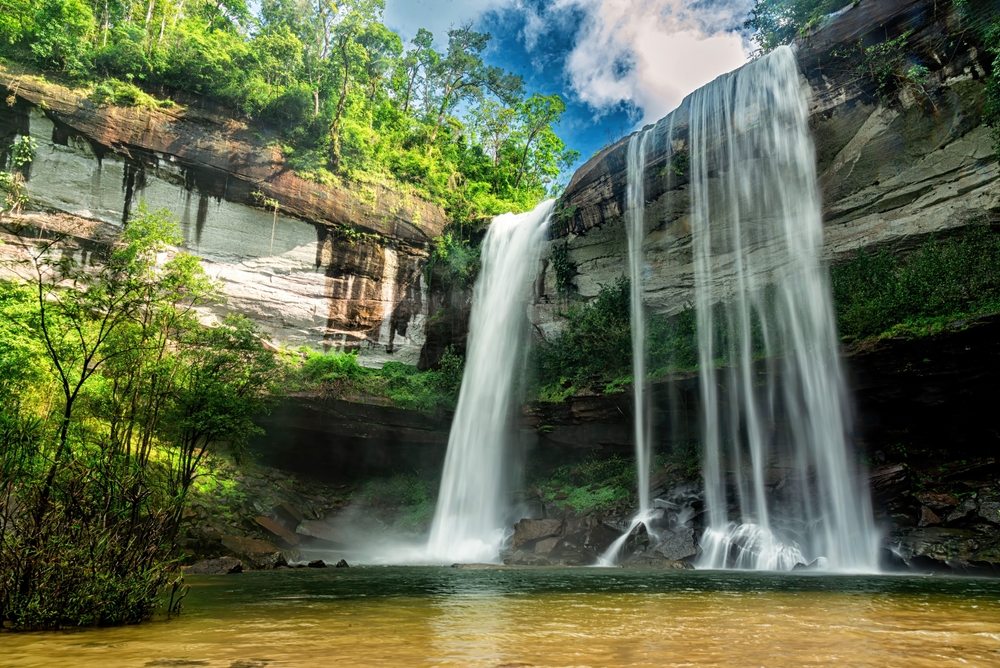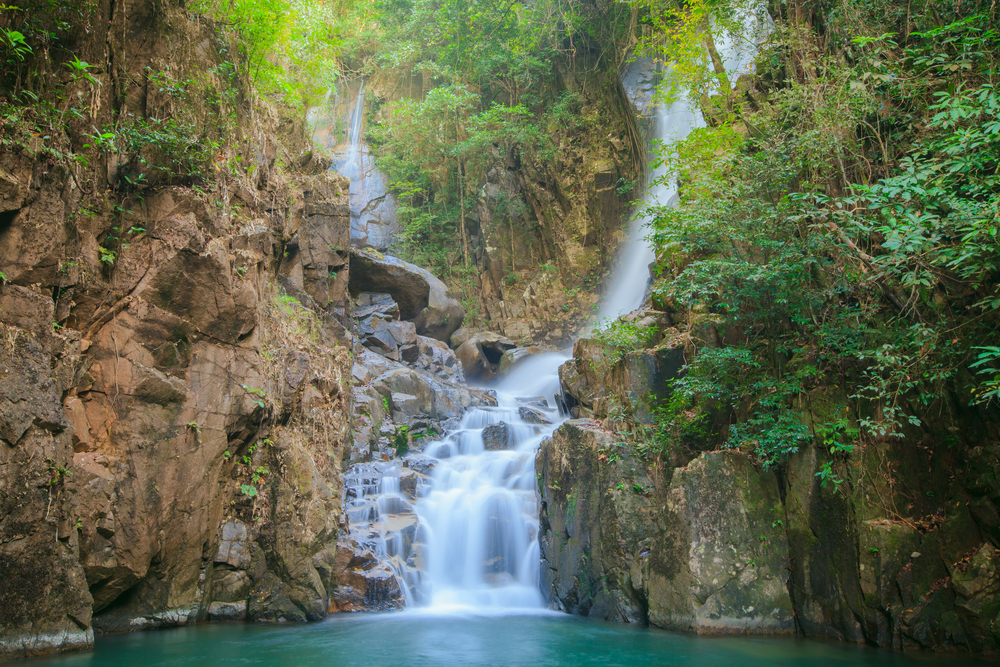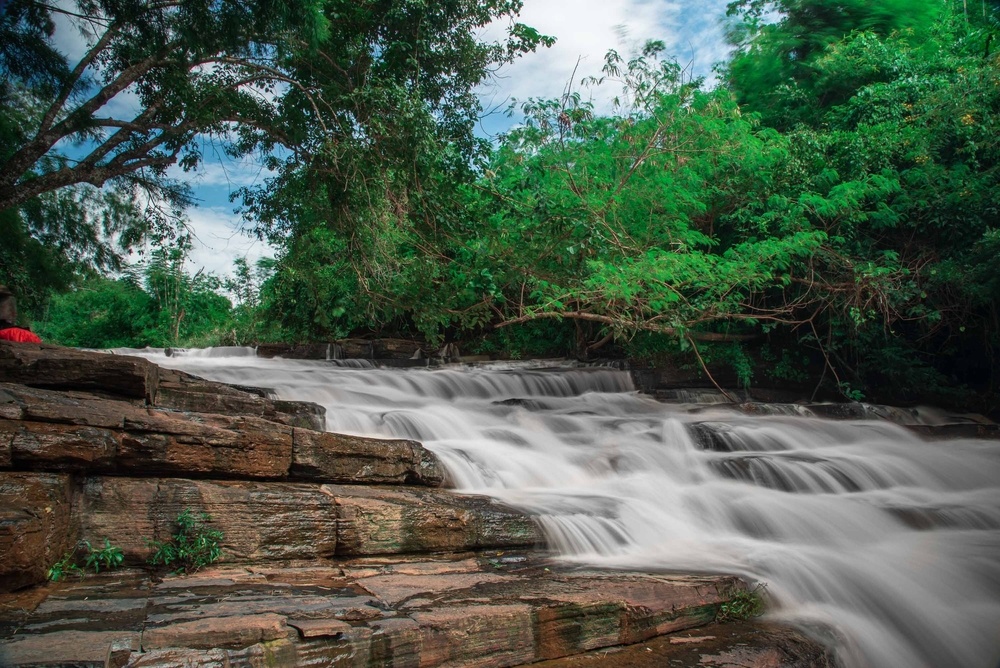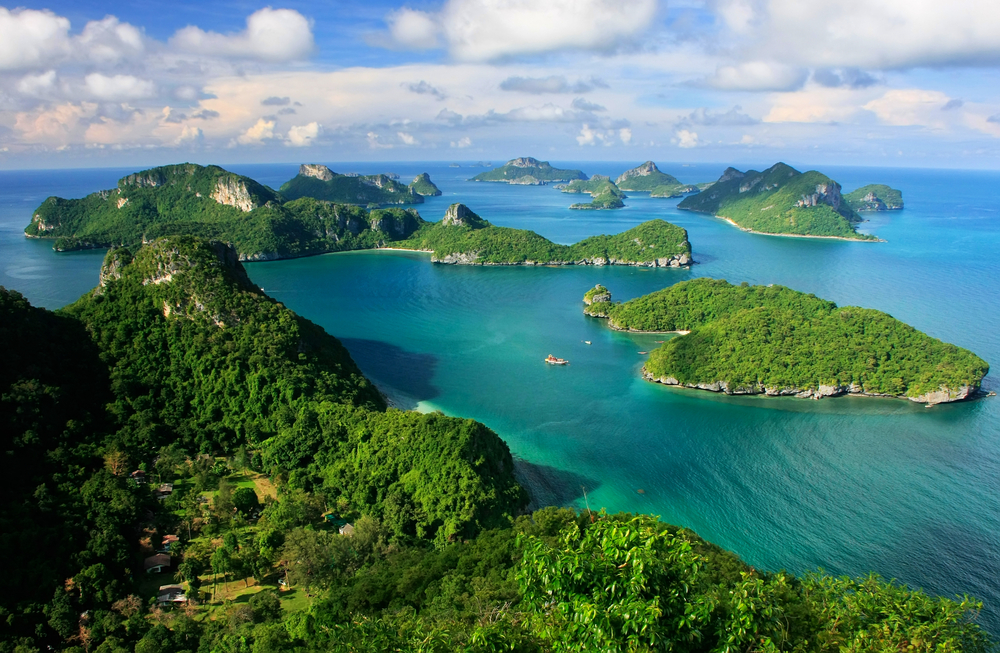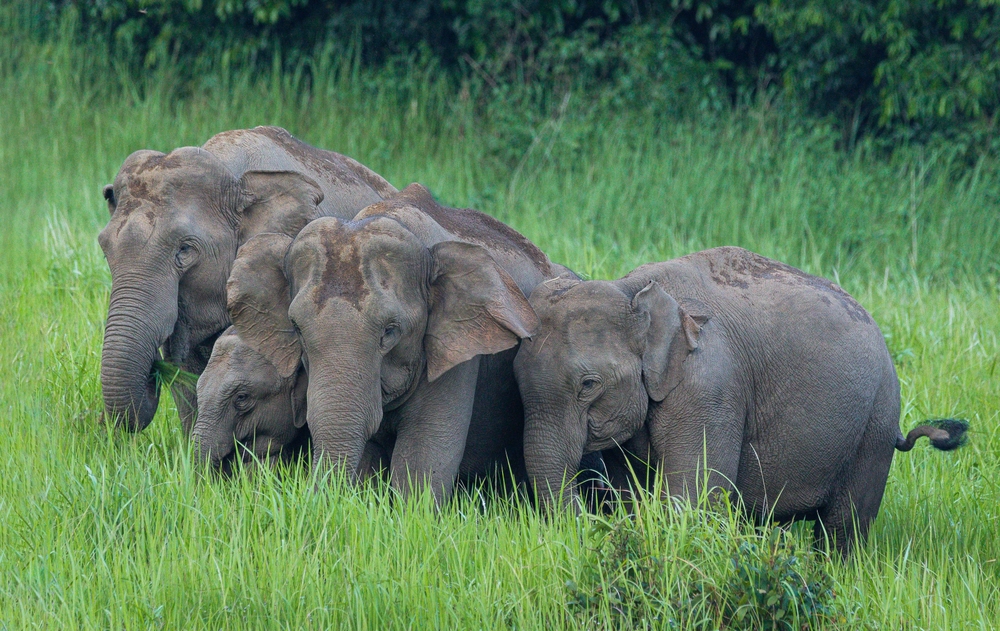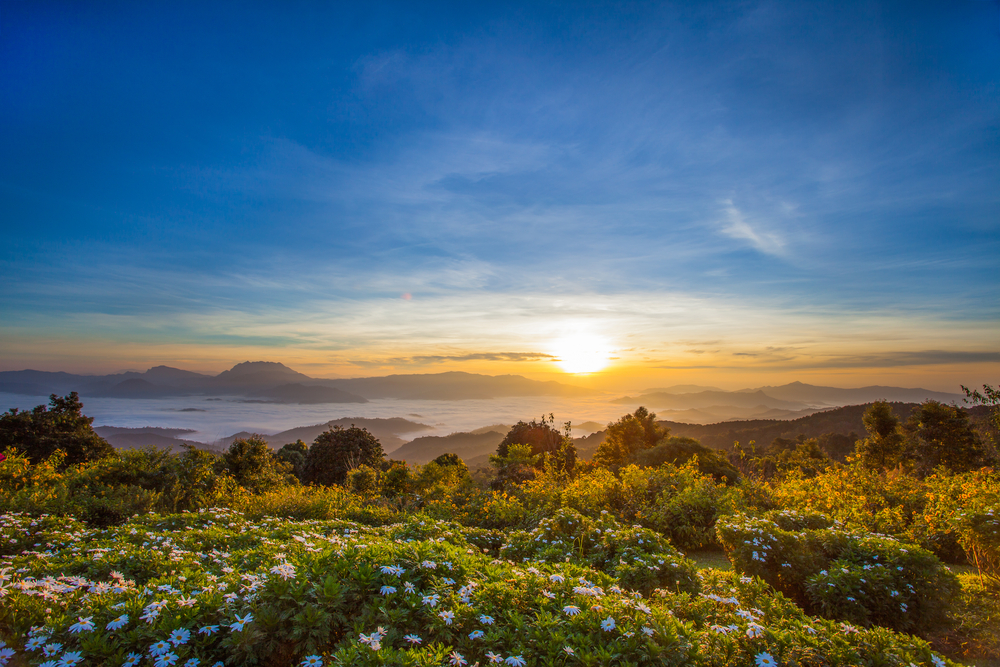Phu Kradueng Overview
Phu Kradueng National Park, known locally as อุทยานแห่งชาติภูกระดึง (Uttayan Haeng Chat Phu Kradueng), is a stunning natural sanctuary in northeastern Thailand. Covering an area of approximately 134.8 square miles (348.12 square kilometers), the park is situated in Loei Province and is one of the country’s most beloved national parks.
Its name, Phu Kradueng, translates to “Bell Mountain,” inspired by the bell-like echoes that resonate across its landscape. This iconic plateau rises to an elevation of 4,035 feet (1,230 meters), providing breathtaking vistas and a cool climate that contrasts with Thailand’s typically tropical weather.
The terrain of Phu Kradueng is a mesmerizing mix of sandstone cliffs, sprawling grasslands, pine forests, and dense tropical rainforests. Its summit plateau, which measures around 37 square miles (60 square kilometers), is a haven of natural beauty. Visitors can explore its picturesque waterfalls, such as the tumbling cascades of Tat Hong Waterfall and Wang Kwang Waterfall.
There are also majestic cliffs like Pha Nok Aen, famous for its sunrise views, and Pha Lom Sak, which offers dramatic sunset vistas overlooking the lush valleys below. The plateau is interspersed with seasonal wildflowers, while its forests feature species such as Siamese sal trees, pines, and ferns, adding to the park’s diverse vegetation.
Wildlife is abundant in Phu Kradueng, with a variety of mammals, birds, and reptiles inhabiting its diverse ecosystems. Visitors might catch glimpses of sambar deer grazing near the campsites, barking deer darting through the forest, or even elusive species like the Asiatic black bear.
Bird enthusiasts can spot over 100 bird species, including the red-headed trogon, silver pheasant, and great hornbill. Butterflies, amphibians, and lizards also add to the park’s vibrant biodiversity, making it an exciting destination for nature lovers and wildlife photographers alike.
Phu Kradueng National Park is renowned for its hiking trails, which attract adventurers from all over the world. The challenging ascent to the plateau is a rite of passage for many, with well-marked paths leading through various ecological zones. Once on the summit, visitors can trek through a network of trails that link its iconic cliffs, waterfalls, and viewpoints.
The park also offers camping facilities, allowing visitors to fully immerse themselves in its serene environment. Stargazing is another popular activity, as the high altitude and lack of light pollution provide a clear view of the night sky.
Conservation efforts in Phu Kradueng have been instrumental in maintaining its natural beauty and biodiversity. However, challenges such as habitat preservation and human impact from tourism remain significant concerns. Park authorities have implemented measures like restricting visitor numbers during certain seasons, promoting eco-friendly practices, and involving local communities in conservation initiatives. These efforts have helped preserve the park’s ecosystems while ensuring that future generations can continue to enjoy its wonders.








































































